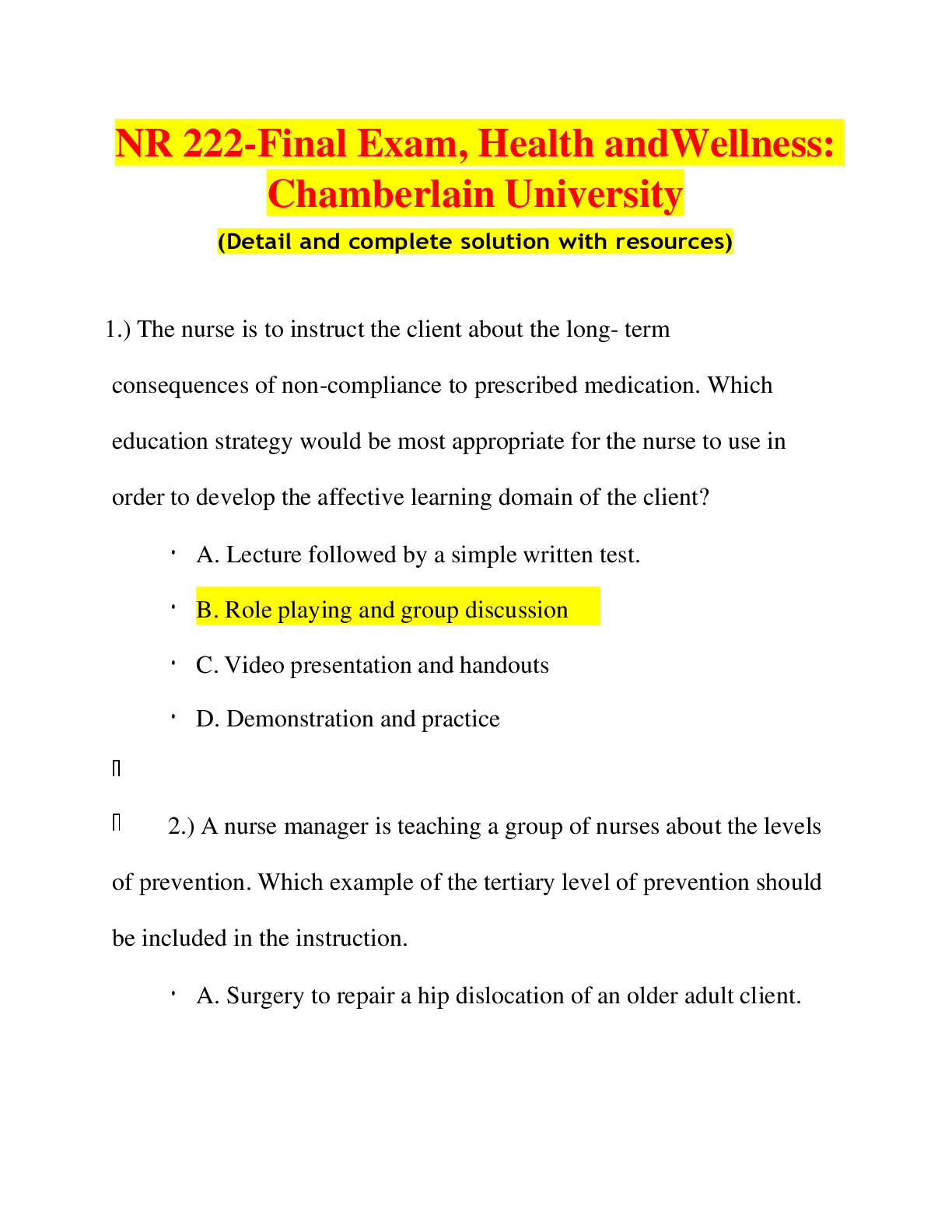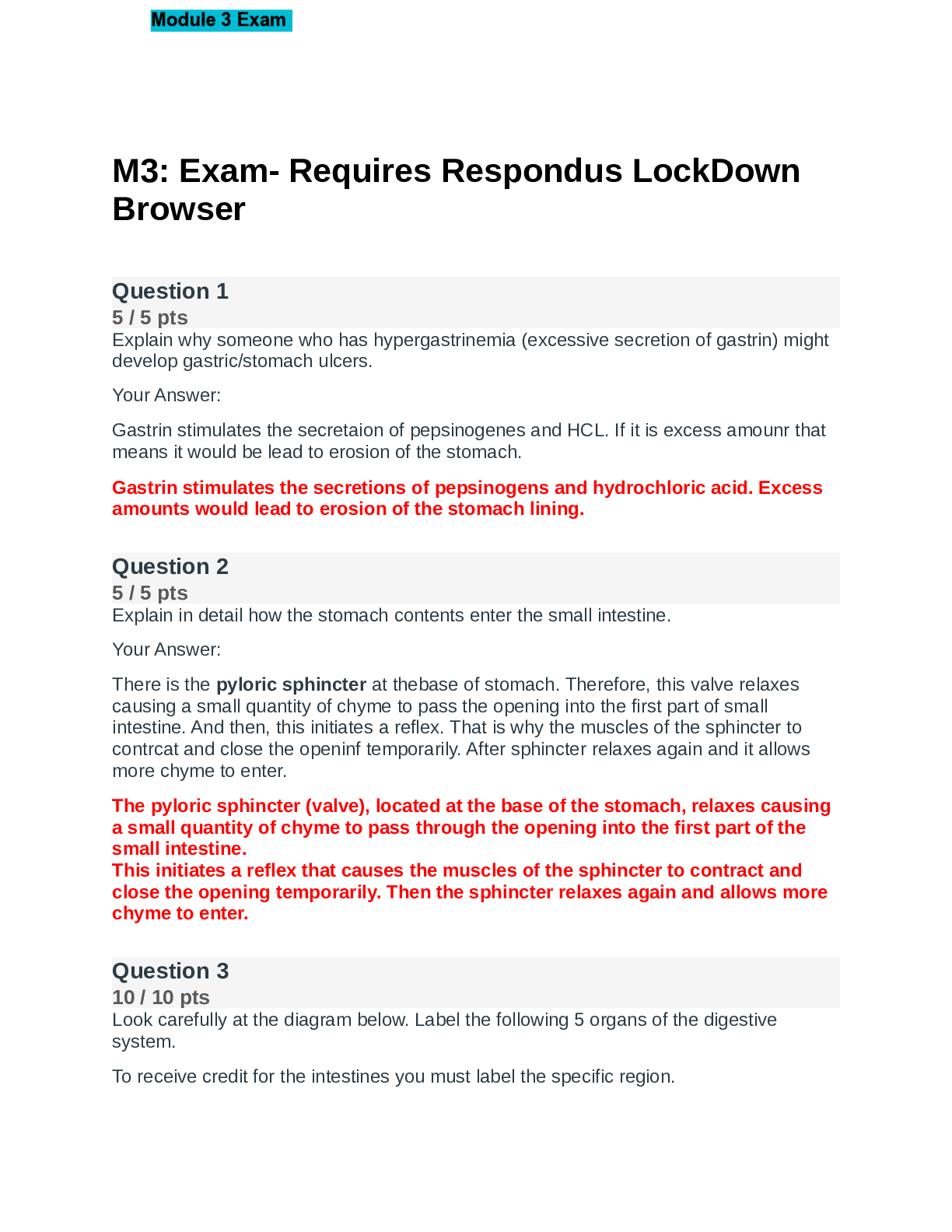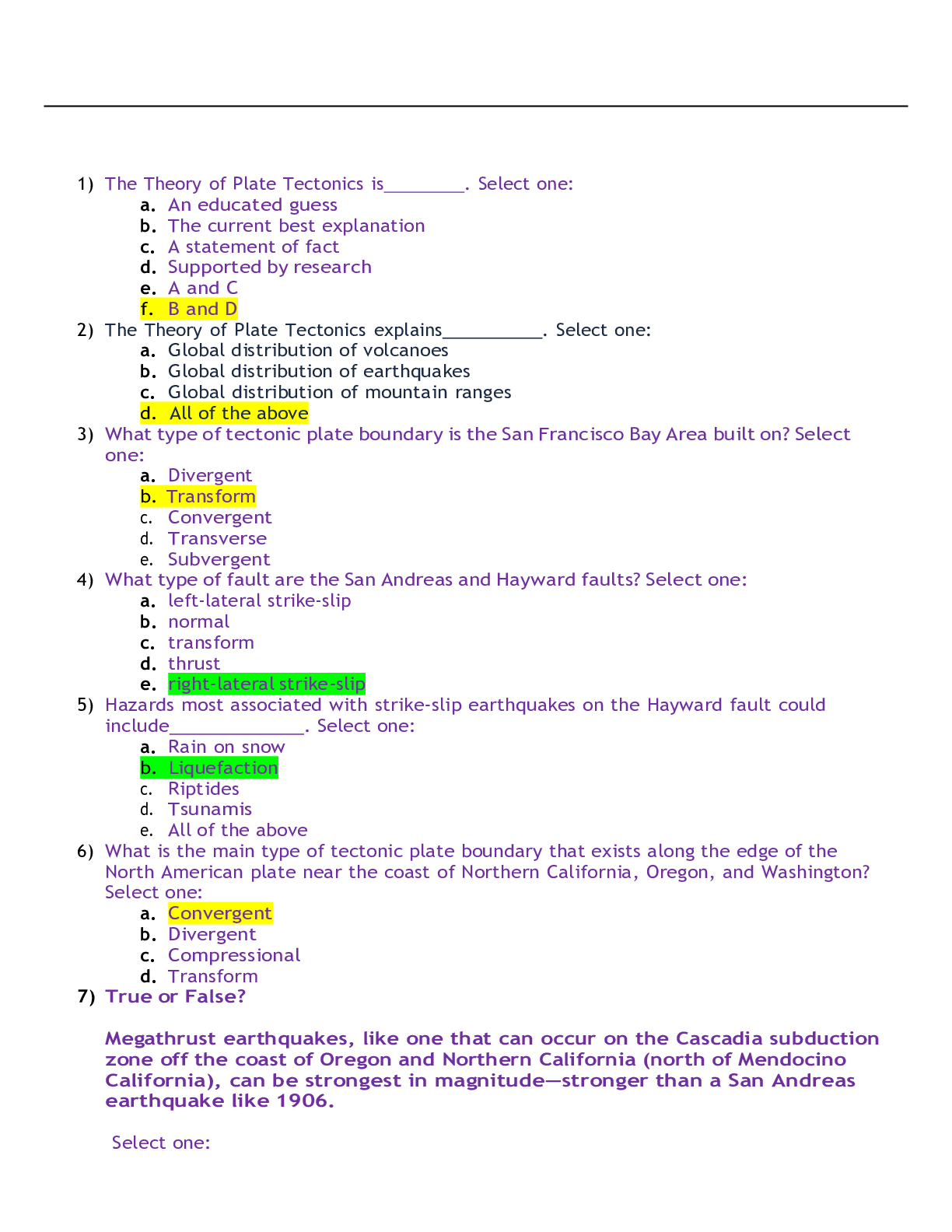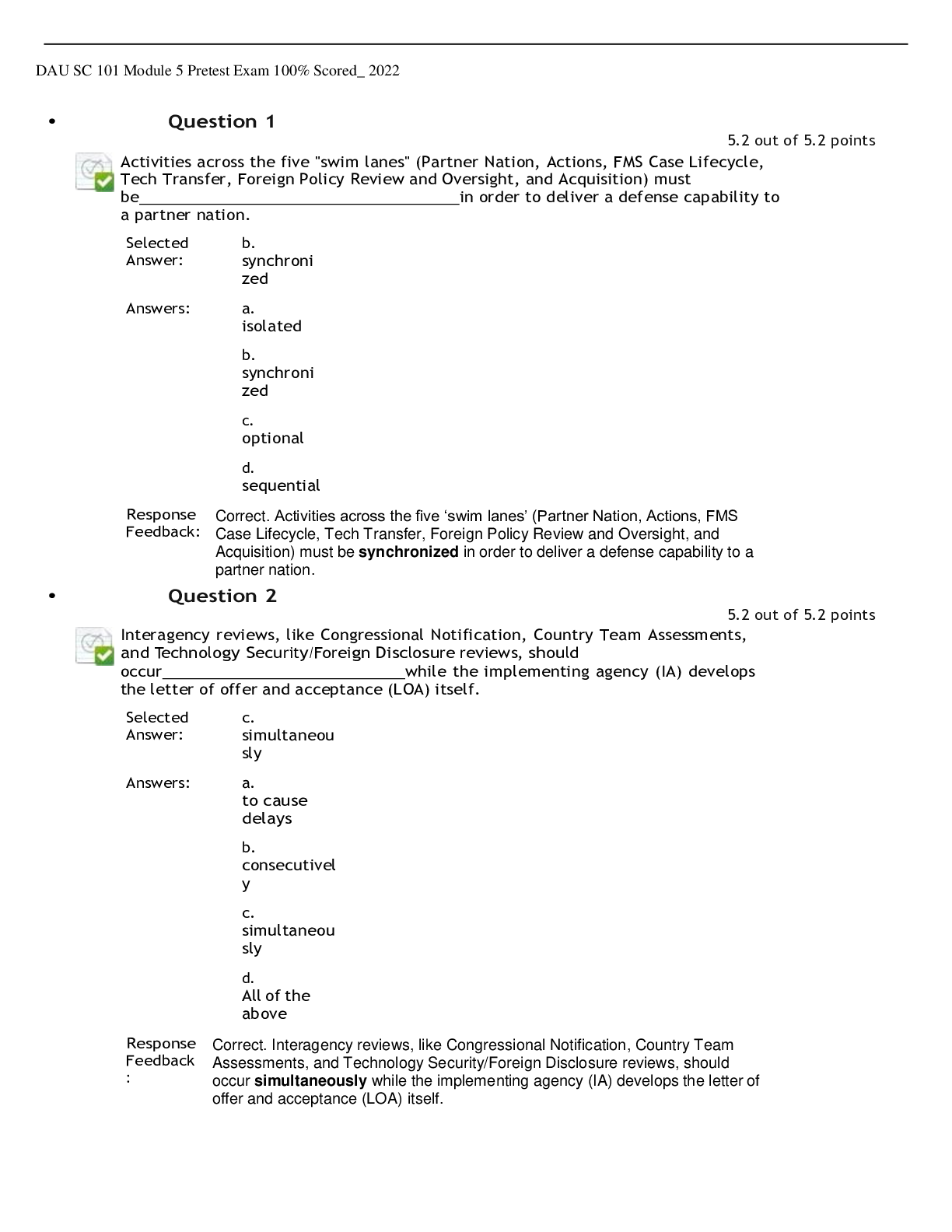Computer Networking > EXAM > Introduction to Computer Networks Spring 2012 EECS148 Final Exam (Wednesday, June 13th, 2012) Open b (All)
Introduction to Computer Networks Spring 2012 EECS148 Final Exam (Wednesday, June 13th, 2012) Open books, open notes. Computers and cellphones should be turned off.
Document Content and Description Below
Prof. Athina Markopoulou Introduction to Computer Networks Spring 2012 EECS148 Final Exam (Wednesday, June 13th, 2012) Open books, open notes. Computers and cellphones should be turned off. Stude... nt’s Last Name: Student’s First Name: Student ID: Email: Problem # Points Out of Total 1 25 2 30 3 20 3 25 Total 100 Academic Honesty Policy: I agree to abide by the UCI Academic Senate Policy on Academic Honesty (Appendix VIII.B), which specifies that students have responsibility for: 1. Refraining from cheating and plagiarism. 2. Refusing to aid or abet any form of academic dishonesty. 3. Notifying professors and/or appropriate administrative officials about observed incidents of academic misconduct. The anonymity of a student reporting an incident of academic dishonesty will be protected. Student’s Signature: GOOD LUCK! 11. (25 Points) Link-level vs. Transport-level Reliability. Host A sends packets (of L bits each) to Host C through an intermediate router B, using packet switching. Assume that the transmission and any other delays are negligible compared to propagation delay, which is τ across each of the two links. Unfortunately, the links are lossy in the forward direction: a packet can be lost on each link (A-B or B-C) with probability p. Packets transmitted in the reverse direction (from C to B, and from B to A) are never lost. To achieve reliability, in the presence of loss, we consider using acknowledgements and a stop-and-wait protocol either locally at each link (at the link layer) or end-to-end (at the transport protocol). I. Link-level Reliability: The sender on each link (A on link A-B, B on link B-C) transmits the packet in the forward direction then waits for a timeout T1 = 2τ. If the receiver (B on link A-B, C on link B-C) receives a packet, then it sends an ACK immediately; otherwise it does nothing. At time T1, the sender either receives an ACK, in which case it proceeds with the next packet; or receives nothing, in which case it retransmits the same packet. II. End-to-end Reliability: A transmits the packet then waits for a timeout T2 = 4τ. If C receives a packet, then it sends an ACK immediately all the way back to A; otherwise it does nothing. At time T2, A either receives an ACK, in which case it proceeds with the next packet; or it receives nothing, in which case it retransmits the packet. B in this scenario just relays packets. Both schemes achieve reliability, but we also care about two performance metrics: average delay (defined from the time that A transmits until B receives the packet, averaged over packets) and throughput (defined as the the average number of bits sent per unit time). More specifically: (a) What is the average delay and throughput of scheme I? (b) What is the average delay and throughput of scheme II? (c) Which scheme is better in terms of average delay? (d) Which scheme is better in terms of throughput? Notes: Justify your answers. Also, ignore protocol details at link-layer (e.g. Ethernet. 802.11) or transport layer (e.g. TCP) and consider the stop-and wait protocol as defined above. 2MORE SPACE for answer 32. (30 Points) Routers and Switches. Consider the following figure, depicting 6 hosts (A,B,C,D,E,F), 2 switches (S1, S2) and one router (R).\LAN" is a local area network whose details we can ignore. Assume that all the forwarding tables at the switches are originally empty. (The entries in the ARP tables depend on the question.) (a) How many subnets are there? Assign IP addresses to all interfaces using subnets of the form 192.168.1.xxx, 192.168.2.xxx, etc. In the remaining questions, if you need to refer to a MAC address of an adaptor, it is ok to use a symbolic name like MACA for A, etc.) (b) Consider sending an IP datagram from host E to host F. Assume that all ARP tables on E’s subnet are up to date. Describe all actions taken by any node and show the source and destination IP and MAC addresses on all MAC frames sent. (c) Next, E would like to send an IP datagram to B. Assume that E’s ARP table does not contain B’s MAc address. Will E perform ARP to find B’s MAC address: yes or no and why? Show the source and destination IP and MAC addresses on the frame sent from E to B (for transmission on the first link only). (d) Host A would like to send an IP datagram to host B. Assume that neither A’s nor B’s ARP tables contain each other’s MAC address. i. Describe the ARP message sent by A. ii. What actions will S1 perform when it receives that message? iii. Will the router R also receive that message? If so, will it forward it to the right? iv. Will Host B receive the ARP message sent by A? If yes, what message will B send in response and to what MAC destination address? v. What will switch S1 do when it receives B’s response? [Show More]
Last updated: 2 years ago
Preview 1 out of 9 pages

Buy this document to get the full access instantly
Instant Download Access after purchase
Buy NowInstant download
We Accept:

Reviews( 0 )
$9.00
Can't find what you want? Try our AI powered Search
Document information
Connected school, study & course
About the document
Uploaded On
Jun 08, 2021
Number of pages
9
Written in
Additional information
This document has been written for:
Uploaded
Jun 08, 2021
Downloads
0
Views
66














